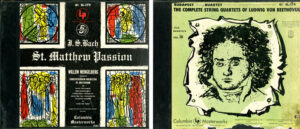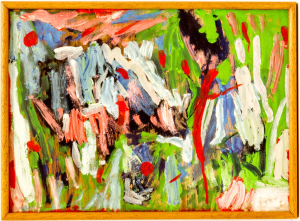, Clarice’s three women. IMS Clarice Lispector, 2018. Disponível em: https://site.claricelispector.ims.com.br/en/2018/06/12/as-tres-mulheres-de-clarice/. Acesso em: 07 January 2026.
A new book by Clarice Lispector has just been released: Correio para mulheres (Women’s Mail). The collection, edited by Aparecida Maria Nunes, includes texts directed towards a female readership and written in three distinct moments in the writer’s career.
On the first occasion, between May and September of 1952, Clarice writes the column “Entre mulheres” (Among Women) in the Comício newspaper, founded by her friend Rubem Braga, where she publishes under the pseudonym of Tereza Quadros. A few years later, in 1959, she assumes “Feira de utilidades” (Utility Fair) in the Correio da Manhã newspaper, now under the name of Helen Palmer. Finally, over the next two years, the “Nossa conversa” (Our Conversation) column, this time as a ghost writer for the actress Ilka Soares, whom she befriended and who was, according to column editor Albert Dines, an “authentic pseudonym.”
Clarice deploys three women’s names in order to preserve her literary production, which was published in books under her real name, but also in the press, in magazines such as Senhor and in the newspaper Jornal do Brasil, in which she reached great popularity with the public.
In the unpretentious space of women’s columns – and with the freedom guaranteed by anonymity –, Clarice gives advice on etiquette, fashion, diet, and raising children, without however being able to completely disappear. Clarice’s style and sense of humor are often seen there, in addition to the discussion of topics that will be developed in her novels.
The exhortation for the liberation of women’s mores in the midst of the injunctions attributed to the female sex permeated several texts. In “Driblando a moda” (Evading Fashion), for example, she recommends: “(…) purple is the next color. For some of you, purple will fit like a luxury glove. In others, despite being in fashion, it may look sad and widowed. Remember: fashion is fashion, but you are in charge.” In another, “Quem é que você deve imitar?” (Whom Should You Imitate?), she is more direct: “The question is this: you must imitate yourself.”
The new edition is the result of the fusion of two previously published books: Correio feminino (Ladies’ Mail) and Só para mulheres (Just for Women). The journalist Alberto Dines, recently deceased, is the author of the introduction, in which he remembers the neatness with which his friend turned in her pages set up with images cut out from French magazines and the different texts and titles that were typewritten and arranged how they should appear: “She was not only a diligent columnist, attentive to her reader, but also a careful editor,” the prefacer observes.







